If your potted hydrangea is wilting, it’s likely due to one of these 10 common causes. Luckily, there are solutions for each problem so you can get your plant back to looking healthy in no time.
Can Potted Hydrangeas Come Back to Life?
But don’t despair—with a little care, you can bring your plant back to life. If your potted hydrangea is wilting, it’s likely due to one of these 10 common causes.
Too much sun. 1.
If your plant is in a sunny spot, try moving it to a shadier location. Hydrangeas need at least six hours of sunlight each day, but too much sun can cause the leaves to wilt.
Not enough water. 2.
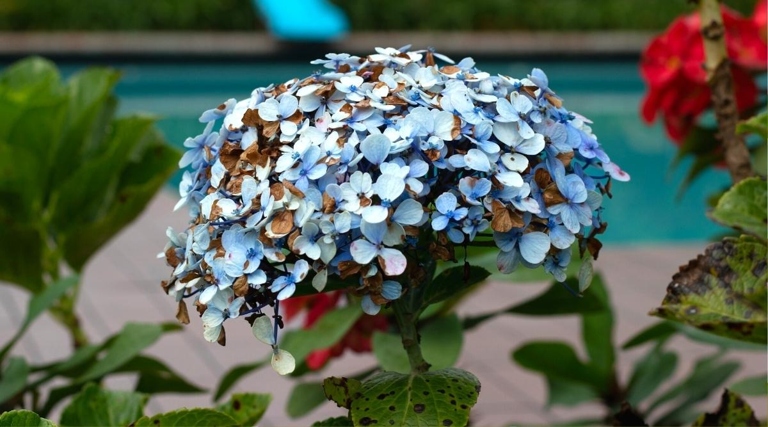
Hydrangeas need to be kept moist, but not soggy. Water the plant when the soil feels dry to the touch.
Over- watering. 3.
Be sure to empty the saucer beneath the pot after watering and never let the plant sit in water. If the soil is constantly wet, the roots will rot and the plant will wilt.
4. Poor drainage.
If the pot doesn’t have drainage holes, add some to the bottom before planting. Hydrangeas need well-drained soil to thrive.
Fertilizer burn. 5.
Apply a balanced fertilizer according to the package directions. Too much fertilizer can cause the leaves to wilt and turn brown.
6. Temperature stress.
Move the pot to a shady spot and out of direct sunlight. Hydrangeas prefer cool temperatures and will wilt in hot, dry conditions.
7. Drought stress.
If the plant is wilting and the leaves are turning brown, it’s likely due to drought stress. Water the plant deeply and regularly during dry periods.
Pest infestation. 8.
Aphids, scale, and other pests can suck the moisture from the leaves, causing them to wilt. Inspect the plant regularly and treat with an appropriate pesticide if necessary.
Disease. 9.
Wilting can also be caused by disease, such as root rot or powdery mildew. If you suspect disease, consult a professional for diagnosis and treatment.
Transplant shock. 10.
If you’ve recently transplanted the hydrangea, it may go into shock and wilt. Water the plant deeply and keep it out of direct sunlight until it recovers.
Be sure to water the plant regularly, fertilize it according to the package directions, and provide it with the proper amount of sunlight. If you suspect disease, consult a professional for diagnosis and treatment. With a little care, you can bring your wilting potted hydrangea back to life.
What Causes Hydrangea to Wilt?
If the soil is constantly wet, the roots can start to rot, which will cause the plant to wilt. One possibility is that the plant is not getting enough water. If the soil is dry, the plant will start to wilt. There are a number of reasons why a potted hydrangea might start to wilt. Another possibility is that the plant is getting too much water. If the soil is poor quality or the plant is not being fertilized, it will start to wilt. Another possibility is that the plant is not getting enough light. If the plant is in a shady spot, it will start to stretch out and become leggy, and eventually the leaves will start to turn yellow and fall off. Finally, it is also possible that the plant is not getting enough nutrients.

If the plant is in a shady spot, try moving it to a sunny spot. If it is dry, water the plant. If the plant is not being fertilized, try adding some fertilizer to the pot. If your potted hydrangea is wilting, the first thing you should do is check the soil. If it is wet, try to improve the drainage by adding some perlite or sand to the pot.
Overwatering
There are a few things you can do to solve this problem: If you’re noticing your potted hydrangea wilting, it’s likely due to overwatering. When plants are overwatered, they can’t take up the nutrients they need from the soil, which can lead to wilting.
– Let the soil dry out completely between watering.
– Check the drainage of your pot and make sure it’s adequate.
– Repot the plant in a pot with drainage holes.
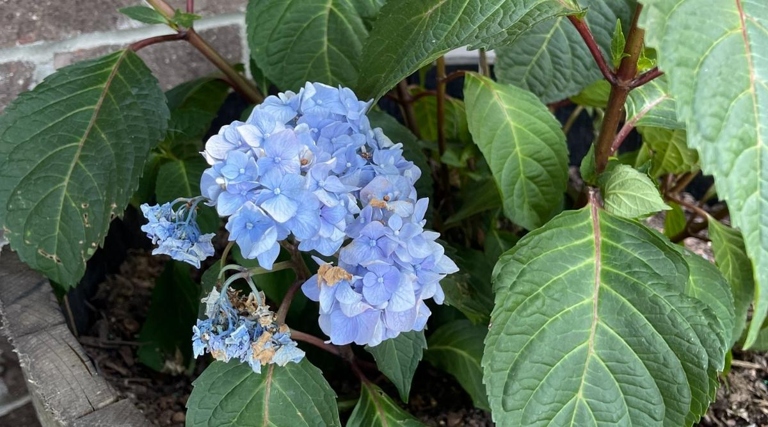
If you catch the problem early, your hydrangea should recover quickly. However, if the roots have already begun to rot, you may need to start with a new plant.
How to Fix Overwatered Hydrangea?
If you think you have overwatered your potted hydrangea, don’t despair. There are a few things you can do to save it.
If the pot doesn’t have drainage holes, water can build up and drown the roots. First, check the drainage. If the pot does have drainage holes, make sure they’re not blocked.
If it’s soggy or waterlogged, it needs to be replaced. Next, check the soil. If the soil is dry, it may just need a good watering.

But if the leaves are wilted and the stems are dry, the plant may be able to recover. If the leaves are wilted and the stems are soggy, it’s probably too late. Finally, check the plant itself.
If you think you have overwatered your potted hydrangea, don’t despair. There are a few things you can do to save it.
If the pot doesn’t have drainage holes, water can build up and drown the roots. First, check the drainage. If the pot does have drainage holes, make sure they’re not blocked.
If it’s soggy or waterlogged, it needs to be replaced. Next, check the soil. If the soil is dry, it may just need a good watering.
But if the leaves are wilted and the stems are dry, the plant may be able to recover. If the leaves are wilted and the stems are soggy, it’s probably too late. Finally, check the plant itself.
If you think you have overwatered your potted hydrangea, don’t despair. There are a few things you can do to save it.
If the pot doesn’t have drainage holes, water can build up and drown the roots. First, check the drainage. If the pot does have drainage holes, make sure they’re not blocked.
If it’s soggy or waterlogged, it needs to be replaced. Next, check the soil. If the soil is dry, it may just need a good watering.
But if the leaves are wilted and the stems are dry, the plant may be able to recover. If the leaves are wilted and the stems are soggy, it’s probably too late. Finally, check the plant itself.
Underwatering
The good news is that it’s easy to fix! If you notice your potted hydrangea wilting, it’s likely due to underwatering. Simply water your plant more frequently, making sure to soak the roots thoroughly. If the soil is dry to the touch, it’s time to water. This is a common problem, especially for new gardeners.

If you’re unsure how much water your plant needs, check the label or ask a nursery worker. Allow the soil to dry out slightly between waterings to prevent root rot. Overwatering can also be a problem, so be sure to drainage holes in the bottom of your pot.
With a little extra attention, your potted hydrangea will soon be back to its vibrant self!
How to Fix Underwatered Hydrangea?
If your potted hydrangea is wilting, it’s likely due to one of these 10 causes. But don’t worry, there are solutions for each problem!

The most common cause of wilting hydrangeas is simply that they need more water. Check the soil in your pot and water deeply if it’s dry. 1.
Be sure to drainage holes in the bottom of your pot and don’t let the plant sit in water. If the soil is too wet, that can also cause wilting. 2.
Another common cause of wilting is too much sun. 3. If your plant is in direct sunlight, move it to a shadier spot.
If your plant is in a spot that doesn’t get much light, try moving it to a brighter location. 4. Not enough sun can also cause wilting.
If the temperature is too hot or too cold, that can also cause wilting. 5. Most hydrangeas prefer a moderate temperature, so try to keep them in a spot that’s not too hot or too cold.
Check your plant for signs of pests or diseases and treat accordingly. 6. Sometimes, wilting can be caused by pests or diseases.
If you just bought your plant or moved it to a new pot, that can also cause wilting. This is called transplant shock and it’s normal. Just give your plant some time to adjust to its new home. 7.
If you recently pruned your plant, that can also cause wilting. This is because pruning removes leaves and stems, which are necessary for the plant to take in water. 8.
Sometimes, wilting can just be a sign that your plant is getting too big for its pot. If this is the case, you’ll need to repot your plant into a larger pot. 9.
If you’ve tried everything and your plant is still wilting, it’s best to just start over with a new plant. Finally, wilting can sometimes be a sign that your plant is dying. 10.
Extreme Temperature
If you notice your potted hydrangea wilting, it could be due to extreme temperatures. If it’s too hot or too cold, the plant will suffer.
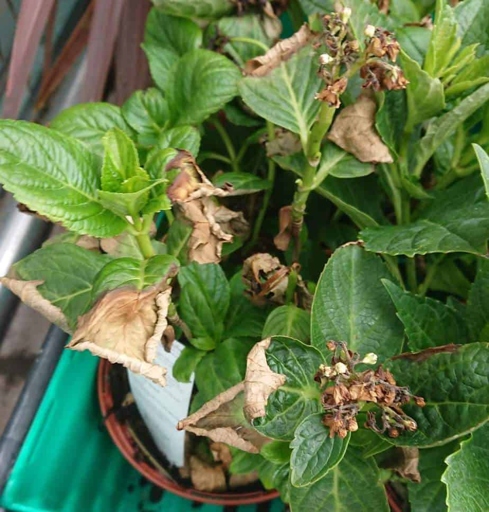
The best solution is to move the plant to a cooler location. If the temperature is too hot, the leaves will start to turn brown and the flowers will wilt.
If the temperature is too cold, the leaves will turn black and the plant will become dormant. The best solution is to move the plant to a warmer location.
If you can’t control the temperature, you can try misting the plant to cool it down or using a heat lamp to warm it up.
How to Treat Hydrangea Damaged by Extreme Temperature?
Hydrangeas are a popular flowering shrub, but they can be sensitive to extreme temperatures. If your hydrangea is wilting, it may be due to damage from the cold or heat. Here are some tips on how to treat hydrangea damage from extreme temperatures:
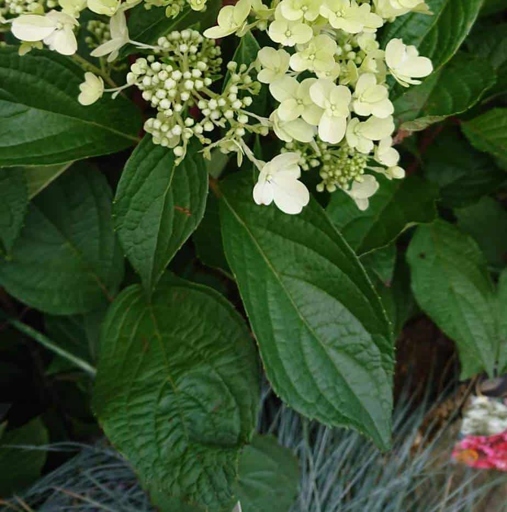
You can also try covering the plant with a frost blanket or tarp. If the plant is already in a pot, you can wrap the pot in bubble wrap or burlap to help insulate it. If your hydrangea is wilting from the cold, try moving it to a warmer location.
If your hydrangea is wilting from the heat, try moving it to a cooler location. If the plant is in a pot, you can also try placing it in a larger pot with some moistened peat moss or vermiculite to help keep the roots cool. You can also try misting the leaves with water or placing a fan near the plant to help cool it down.
Cold Drafts
One possibility is that the plant is getting too much sun. Make sure the pot has at least one hole for every inch of diameter. Move it to a shadier spot and see if that helps. If you find that your potted hydrangea is wilting, it could be due to a number of reasons. Another possibility is that the pot doesn’t have enough drainage holes.
Check the soil to see if it is moist or dry. If it is moist, let the plant dry out for a few days before watering again. Another possibility is that the plant is getting too much water. If the soil is dry, water the plant thoroughly.
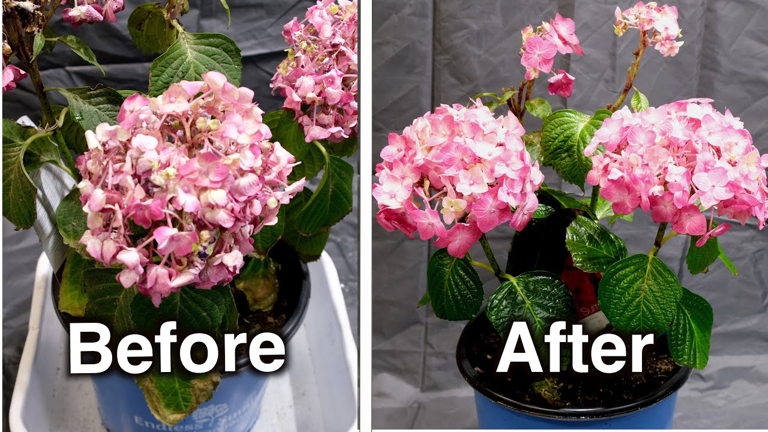
Finally, cold drafts could also be the culprit. If the plant is near a window or door, make sure to close the curtains or doors to keep the drafts out.
How to Treat Hydrangea Damaged by Cold Drafts?
If your potted hydrangea is wilting, it may be because it’s been damaged by cold drafts. Here are some tips on how to treat hydrangea damaged by cold drafts:
Move your potted hydrangea to a warmer location. 1.
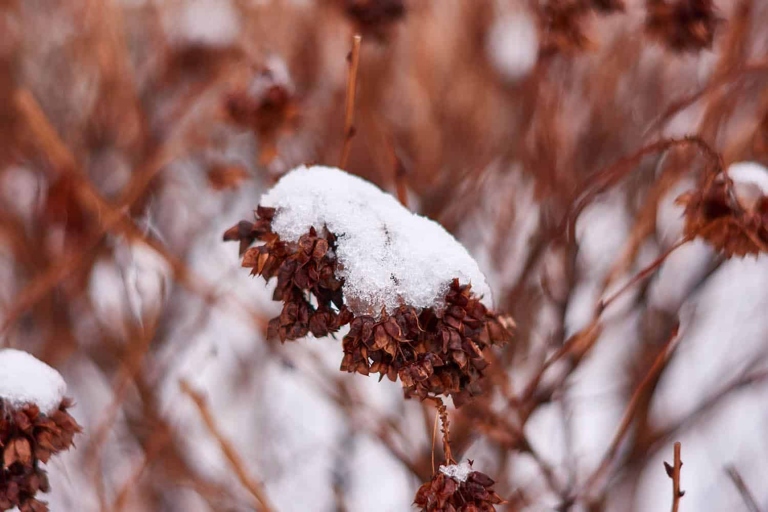
If the leaves are wilted, try misting them with water. 2.
3. If the roots are damaged, you may need to repot the plant.
4. Apply a balanced fertilizer to help the plant recover.
Keep an eye on the plant and make sure it gets enough water. 5.
With a little care, your potted hydrangea should recover from cold damage and continue to thrive.
Root Damage
If you suspect that root damage is the cause of your hydrangea’s wilting, there are a few things you can do to try and save the plant. This can be caused by a number of things, including overwatering, under- watering, or even planting the hydrangea in a pot that is too small. One of the most common reasons for a potted hydrangea to wilt is due to root damage.
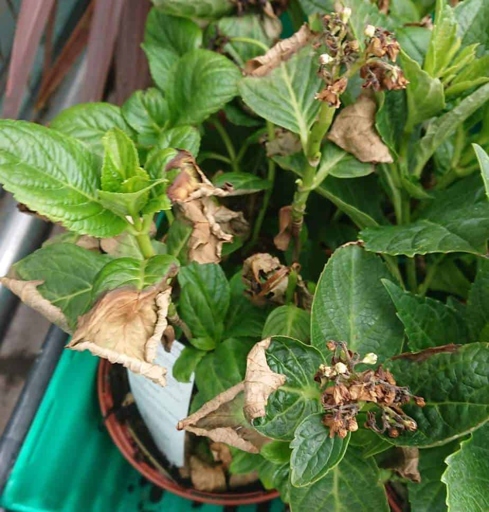
If the roots look healthy, however, you can try to replant the hydrangea in a new pot with fresh, well-draining soil. If they are, it is likely that the plant is beyond saving. First, check the roots of the plant to see if they are mushy or discolored. Be sure to water the plant regularly, but do not overwater, as this can lead to further root damage.
If you are unable to save the plant, you can always take cuttings from a healthy hydrangea and propagate them. This will give you a new plant that is identical to the one that you lost.
How to Treat Hydrangea with Root Damage?
Root damage can be caused by a number of factors, including overwatering, under- watering, and poor drainage. To treat root damage, you’ll need to carefully assess the situation and take appropriate action. If your potted hydrangea is wilting, it’s likely due to root damage.
If you suspect that overwatering is the cause of your hydrangea’s root damage, the first step is to allow the soil to dry out completely. Be sure to check the soil before watering to make sure it’s dry. If under- watering is the problem, you’ll need to water your hydrangea more frequently. Once the soil is dry, you can water your hydrangea as usual.

Poor drainage can also cause root damage. To improve drainage, you can add sand or gravel to the bottom of the pot. If the roots of your hydrangea are sitting in water, they’ll start to rot. You can also try moving your hydrangea to a pot with drainage holes.
Be sure to use a pot that’s large enough to accommodate the roots, and be sure to use fresh, well-draining potting mix. If your hydrangea’s root damage is severe, you may need to repot the plant.
Transplant Shock
There are a few things you can do to minimize the risk of transplant shock: This can happen when the plant is moved from one pot to another, or when it is transplanted into the ground. One of the most common problems with potted hydrangeas is transplant shock. The plant is stressed by the change in its environment and may lose leaves or flowers, or stop growing altogether.
A pot that is too large will cause the roots to spread out and become dry. -Choose a pot that is only slightly larger than the one the plant is currently in.
-Water the plant well before you transplant it. This will help to keep the roots moist and prevent them from drying out.
-Make sure the new pot has drainage holes so that the roots don’t become waterlogged.
-Transplant the plant in the evening or on a cloudy day so that it doesn’t have to adjust to direct sunlight right away.
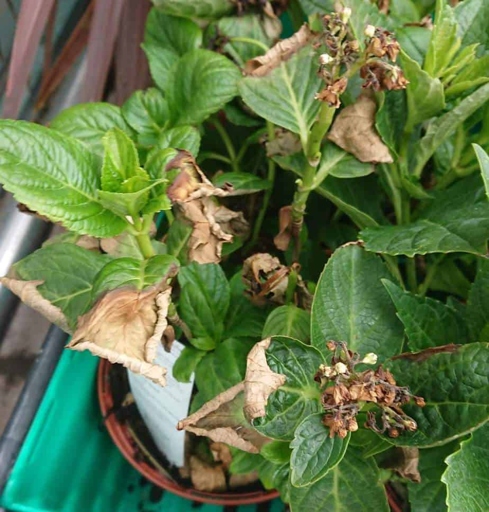
With a little patience and care, your plant will recover and continue to thrive. If you do experience transplant shock, don’t despair.
How to Treat Hydrangea Damaged by Transplant Shock?
If you’ve recently transplanted your hydrangea, it may be experiencing transplant shock. Hydrangeas are a beautiful addition to any home, but they can be delicate. Here are some tips on how to treat your hydrangea if it’s experiencing transplant shock: Transplant shock is a common problem when plants are moved to a new location.
One of the most important things you can do for a plant in transplant shock is to water it regularly. Water regularly. 1. Keep the soil moist, but not soggy.
Too much sun can be damaging, so placing it in a shady spot will help it recover. Another important step is to provide shade for your hydrangea. Provide shade. 2.
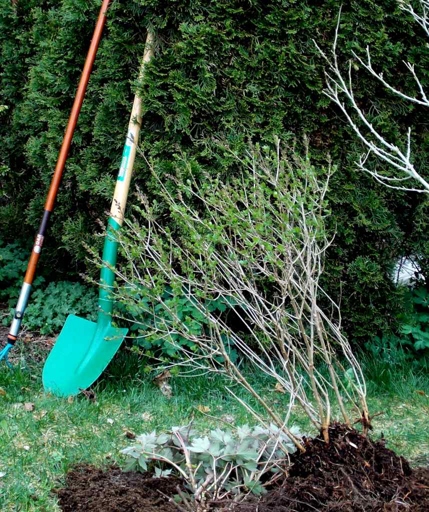
Fertilize. Fertilizing your hydrangea will help it get the nutrients it needs to recover from transplant shock. 3.
Be patient. 4. It takes time for plants to adjust to a new location. With proper care, your hydrangea will eventually recover from transplant shock.
Repotting in the Wrong Season
Repotting in the fall or winter can shock the plant and cause it to wilt. Spring and early summer are the best times to repot, because that’s when the plant is actively growing. If you’re wondering why your potted hydrangea is wilting, it could be because you’re repotting in the wrong season.

This will give the plant time to adjust to its new surroundings and avoid shocking it. If you must repot during the fall or winter, be sure to do it gradually. Move the plant to a pot that’s only slightly larger than its current one, and wait a few weeks before repotting again.
If so, that may be the cause. If your hydrangea is wilting and you’re not sure why, check to see if you’ve recently repotted it. Just be sure to repot in the spring or summer next time, and your plant should be back to normal in no time. Repotting in the wrong season is a common mistake that can be easily fixed.
How to Save Hydrangea Repotted in the Wrong Season?
One of the most common reasons why potted hydrangeas wilt is because they were repotted in the wrong season. If you’re wondering how to save your hydrangea, here are a few tips.

First, make sure you’re repotting in the spring or early summer. This is when the plant is actively growing, so it will be able to adjust to its new environment more easily.
This will help the plant survive the shock of being moved. If you must repot in the fall or winter, make sure to water the plant well before repotting.
Finally, don’t forget to fertilize your plant after repotting. This will help it recover from the stress of being moved and will encourage new growth.
Fertilizer Problems
It’s important to figure out what the problem is so that you can take the necessary steps to revive your plant. If you notice your potted hydrangea wilting, it could be due to a number of reasons.

One of the most common reasons for wilting is that the plant is not getting enough water. Make sure that you’re watering your plant regularly and that the soil is moist. If the soil is dry, give the plant a good watering.
Let the soil dry out and then water the plant less frequently. Another possibility is that the plant is getting too much water. If the soil is soggy or the plant is wilting even after you’ve stopped watering it, it’s possible that the roots are waterlogged.
Cut back on fertilizer and water the plant more frequently to help it recover. This can cause the leaves to turn yellow and the plant to wilt. If you’ve recently applied fertilizer, it’s possible that the plant is getting too much nitrogen. Fertilizer can also cause wilting.
How to Treat Overfertilized Hydrangea?
After a few weeks, you should start to see an improvement in your plant’s health. If you have overfertilized your hydrangea, the first step is to stop fertilizing it. Once you have stopped fertilizing, you can start to flush the excess fertilizer out of the soil. To do this, water your plant deeply a few times a week. The water will leach the excess fertilizer out of the soil and into the drainage tray below.
Pest Infestation
To get rid of pests, try spraying the plant with water or using a pesticide. If you notice your potted hydrangea wilting, it’s likely due to a pest infestation. Common pests include aphids, whiteflies, and mealybugs. If the infestation is severe, you may need to throw out the plant and start over. These pests suck the sap from the plant, causing it to wilt.
How to Treat a Pest Infested Hydrangea?
If the leaves are covered in a sticky substance, you may have scale insects. Once you’ve identified the pest, you can treat it accordingly. If you see small, black bugs crawling on the leaves, they’re probably aphids. First, try to identify the type of pest you’re dealing with. If you’re dealing with a pest infestation on your potted hydrangea, there are a few things you can do to get rid of the pests and save your plant.

If you have aphids, you can spray them off with a hose or blast them with a jet of water from a watering can. You can also try using an insecticidal soap or neem oil. For scale insects, you’ll need to scrape them off the leaves with a blunt knife or your fingernails.
If they do, you may need to repeat the treatment. Once you’ve treated the pests, keep an eye on your plant and make sure the pests don’t come back.
Diseases
These diseases can be caused by a number of factors, including too much or too little water, poor drainage, and pests. One of the most common problems with potted hydrangeas is disease. There are a number of diseases that can affect hydrangeas, including powdery mildew, leaf spot, and root rot.
Powdery mildew is a type of fungus that affects the leaves and stems of the plant. Powdery mildew can be treated with a number of fungicides, but it is important to prevent the disease from occurring in the first place. Powdery mildew is one of the most common diseases that affects hydrangeas. Powdery mildew can be caused by too much or too little water, poor drainage, and high humidity.
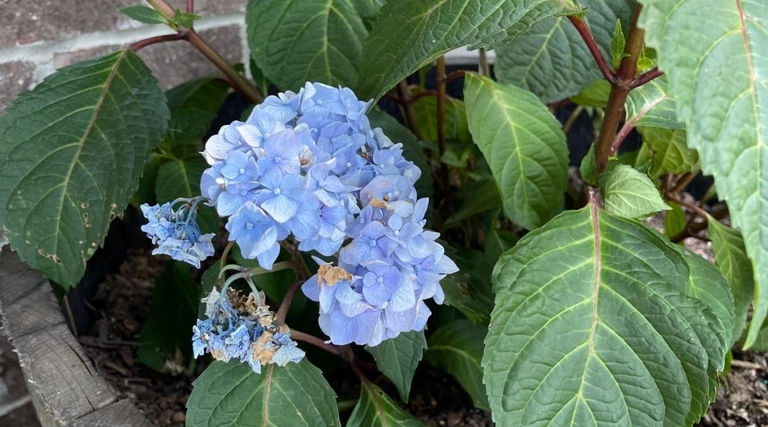
Leaf spot is another common disease that affects hydrangeas. Leaf spot can be caused by too much or too little water, poor drainage, and high humidity. Leaf spot is caused by a number of fungi, including Alternaria and Phyllosticta. Leaf spot can be treated with a number of fungicides, but it is important to prevent the disease from occurring in the first place.
Root rot can be caused by too much or too little water, poor drainage, and high humidity. Root rot is a disease that affects the roots of the plant. Root rot can be treated with a number of fungicides, but it is important to prevent the disease from occurring in the first place.
How to Treat a Disease-Stricken Hydrangea?
The most common cause is lack of water. Other possible causes of wilting include too much sun, too much fertilizer, or pests. Hydrangeas need to be watered regularly, especially during hot weather. If your potted hydrangea is wilting, it could be due to a number of causes. If you suspect any of these, take corrective action immediately. With proper care, your potted hydrangea should soon be back to its healthy self. If the soil is dry, water the plant deeply and then check the soil again in a few hours to see if it needs more water.
When to Worry About a Wilting Hydrangea?
When to Worry About a Wilting Hydrangea?
There are a number of reasons why a hydrangea might wilt, including too much or too little water, too much sun, or pests. If your potted hydrangea is wilting, it’s important to determine the cause so you can take the appropriate steps to revive it.
If the soil is soggy, on the other hand, it’s possible that you’ve been watering it too much. If you think your hydrangea is wilting due to too much or too little water, the first step is to check the soil. If it’s dry, it’s likely that your plant needs more water.
If you think your hydrangea is wilting due to too much sun, the solution is to move it to a spot that gets less direct sunlight. If the problem is too little sun, on the other hand, you can try moving it to a sunnier spot.
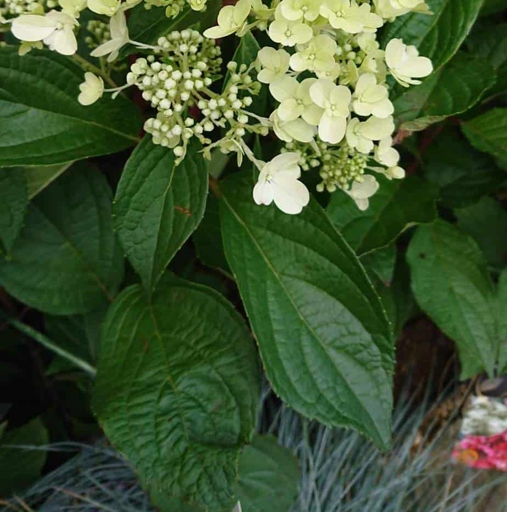
Finally, if you think pests might be to blame for your wilting hydrangea, the best course of action is to take it to a professional for treatment.
Frequently Asked Questions
1. Why is my potted hydrangea wilting?
There are a number of reasons why your potted hydrangea might be wilting. It could be due to too much or too little water, too much or too little sunlight, or a nutrient deficiency. It could also be a sign of a pest problem or disease.
2. How can I tell if my hydrangea is getting too much or too little water?
If your hydrangea is wilting due to too much or too little water, there are a few telltale signs. If the leaves are drooping and the soil is dry, it means the plant is not getting enough water. If the leaves are wilting and the soil is soggy, it means the plant is getting too much water.
3. How can I tell if my hydrangea is getting too much or too little sunlight?
If your hydrangea is wilting due to too much or too little sunlight, there are a few telltale signs. If the leaves are yellowing or the plant is not blooming, it means the plant is not getting enough sunlight. If the leaves are scorched or the plant is wilting, it means the plant is getting too much sunlight.
4. Could a nutrient deficiency be causing my hydrangea to wilt?
A nutrient deficiency can cause your hydrangea to wilt. If the leaves are yellowing or the plant is not blooming, it could be a sign that the plant is not getting enough nutrients.
5. Could pests or diseases be causing my hydrangea to wilt?
Pests and diseases can cause your hydrangea to wilt. If you see any insects on the plant or notice any unusual spots or growths on the leaves, it could be a sign of a pest or disease problem.
6. What is the best way to water my potted hydrangea?
The best way to water your potted hydrangea is to water it slowly and deeply, until the water runs out of the bottom of the pot. This will help ensure that the roots are getting enough water without the plant being overwatered.
7. How much sunlight does my potted hydrangea need?
Your potted hydrangea needs at least six hours of sunlight per day. If you can provide more than six hours of sunlight, that would be even better.
8. What type of fertilizer should I use for my potted hydrangea?
The best type of fertilizer to use for your potted hydrangea is a slow-release fertilizer. This type of fertilizer will provide a steady supply of nutrients to the plant over a long period of time.
9. How often should I fertilize my potted hydrangea?
You should fertilize your potted hydrangea every two to four weeks during the growing season.
10. What should I do if I think my potted hydrangea has a pest or disease problem?
If you think your potted hydrangea has a pest or disease problem, the best thing to do is to take it to a local nursery or garden center for diagnosis and treatment.
Final thoughts
If your potted hydrangea is wilting, it could be due to one of several reasons. Luckily, there are also several solutions that you can try to revive your plant. By understanding the most common causes of wilting and how to address them, you can keep your hydrangea healthy and blooming for years to come.
